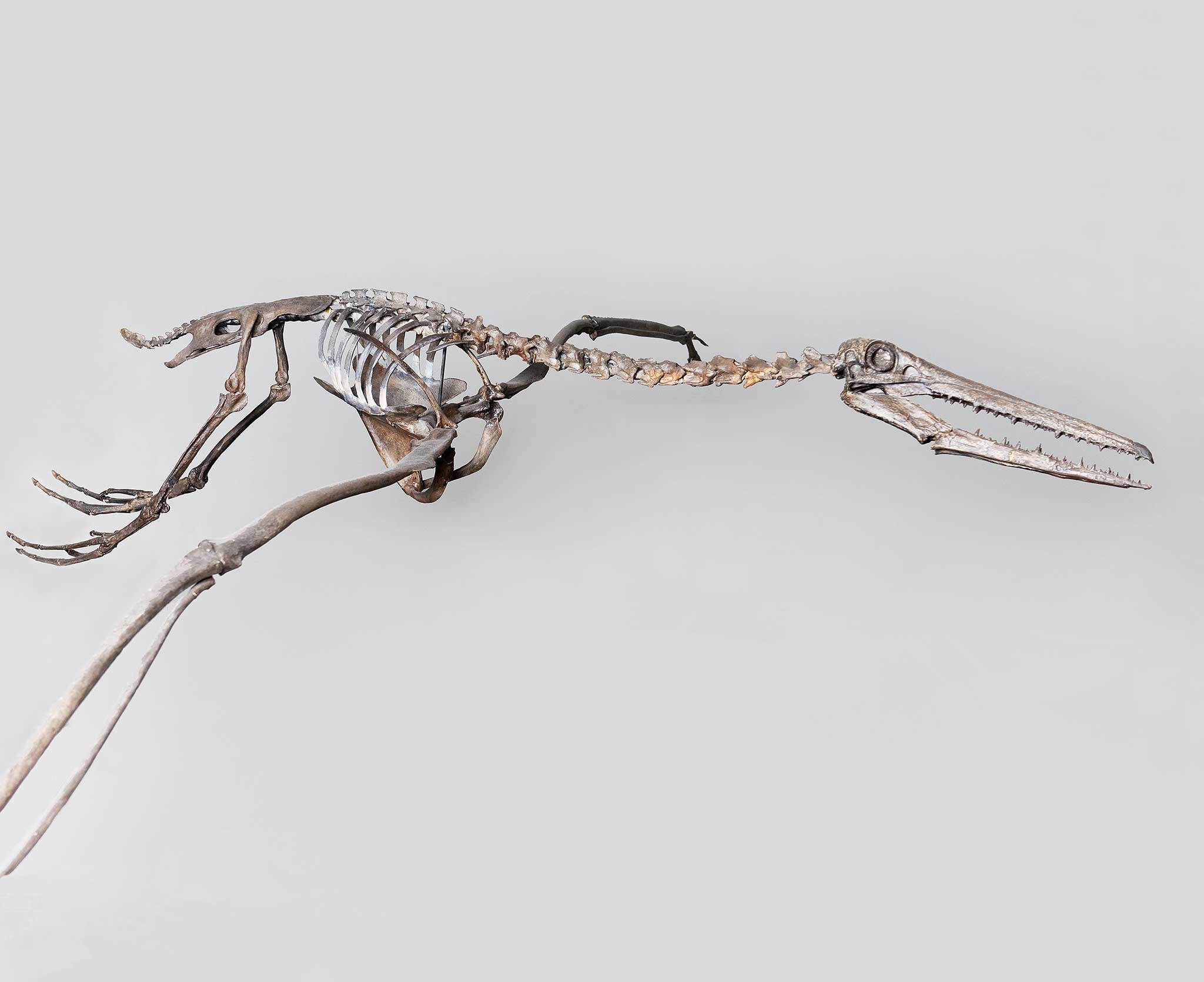Pelagornis – The Largest Flying Bird in the World
The Charleston area holds a bounty of fossils of ancient marine fauna from invertebrates, fish, reptiles, whales to giant Ice Age behemoths like the giant ground sloth. The Charleston Museum possesses one of the most outstanding collections of locally-collected fossil cetaceans (whales, dolphins and porpoises) in the world, and many of these specimens represent new fossil genera and species that tell us much about whale evolution. As you make your way through this virtual exhibit, click on the interactive 3D models to learn more about each animal.
3D Interactive Controls
Orbit around: Left click + drag or One finger drag (touchscreen)
Zoom: Double click on model, scroll with mousewheel, or Pinch (touchscreen)
Pan: Right click + drag or Two fingers drag (touchscreen)
Pelagornis – The Largest Flying Bird in the World
Whales are not the only well-preserved fossils from the Oligocene epoch in the Museum’s collections. It is also home to the largest bird ever capable of flight, the Pelagornis sandersi. P. sandersi, or Pelagornis. One of the false–toothed bird, or pseudodontorns (sudo-DON-torns), this extinct group has anatomical features, such as a hinged and expandable lower jaw, which previously prompted scientists to group them with pelicans and seabirds. More recent studies, however, suggest they are actually more closely related to water fowl like ducks and geese.
Despite similarities to other living relatives, pelagornithids (pela-GORN-ith-ids) including Pelagornis, are a distinct group with characteristics that markedly differentiate them from their modern cousins. The most obvious unique trait is the bony, tooth-like projections on their upper and lower jaws, from which they earn their name. These bony spikes would have served a similar role to teeth and aided these gliding coastal birds in catching slippery prey swimming near the ocean surface. Pelagornis needed this adaptation, as it was unable to land in or take off from water.
Critical Thinking Questions:
- What do the pointed spikes on Pelagornis’ jaw say about its behavior?
- Why are bird fossils difficult to find?
- What features of Pelagornis have proven useful for classifying it?
- How would having an expandable jaw like a pelican aided Pelagornis when hunting?
- Look closely at Pelagornis’ “teeth.” How can you tell these were part of the jaw bone and not actual teeth?
Vocabulary:
- Oligocene – a geologic epoch of that lasted from about 33.9 million to 23 million years ago.
- Epoch – A division of time smaller than a period.
- Fowl – Birds of the order Galliformes, including chickens, turkeys, pheasant, partridges and quail which are hunted or kept for food
- Pseudodontorn – meaning “false-toothed bird.”
- Pelagornithids – A prehistoric group of giant seabirds.


